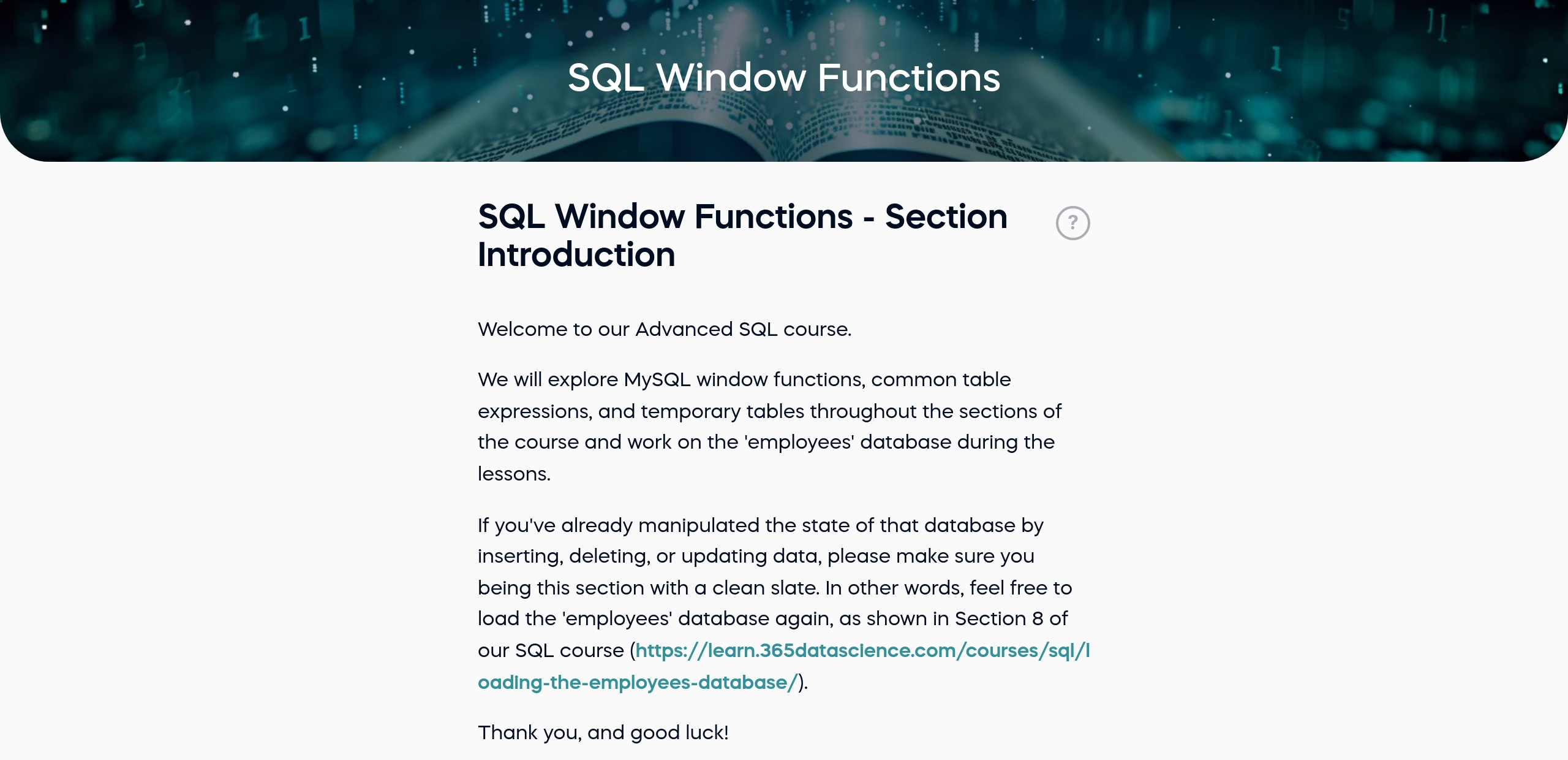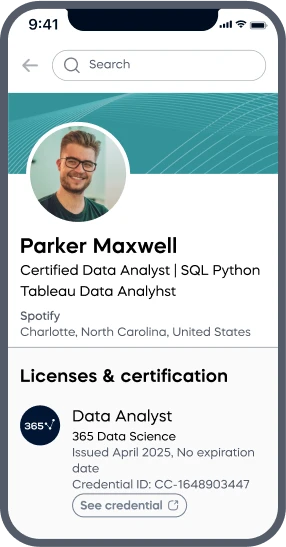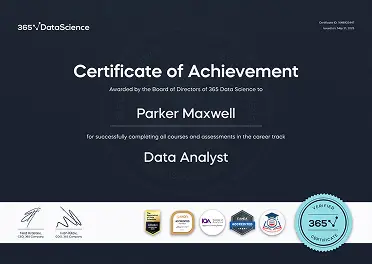Enamul K. B.
See all reviews
Gain a competitive advantage over other analysts with advanced SQL. Learn how to work with window functions, common table expressions, and temporary tables






Skill level:
Duration:
CPE credits:
Accredited

Bringing real-world expertise from leading global companies
Master's degree, Economic and Social Sciences

Bringing real-world expertise from leading global companies
Master's degree, Computer Engineering
Description
Curriculum
Free lessons

1.1 SQL Window Functions - Section Introduction
1 min

1.2 SQL Window Functions - Introduction
2 min

1.3 The ROW_NUMBER() Ranking Window Function
9 min

1.8 Using Several Window Functions in a Query
3 min

1.12 SQL Window Functions Syntax
4 min

1.16 PARTITION BY vs GROUP BY
6 min
9 in 10
of our graduates landed a new AI & data job
96%
of our students recommend
94%
of AI and data science graduates
successfully change
ACCREDITED certificates
Craft a resume and LinkedIn profile you’re proud of—featuring certificates recognized by leading global
institutions.
Earn CPE-accredited credentials that showcase your dedication, growth, and essential skills—the qualities
employers value most.





Certificates are included with the Self-study learning plan.


How it WORKS